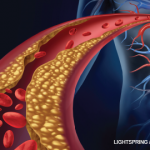As with most other medications, NSAIDs are not something that can be prescribed and then forgotten about. Frequent follow-up with the patient to assess changes in blood pressure, swelling of the extremities, and possible gastrointestinal problems needs to be accomplished. Instructing the patient to recognize these side effects and report them immediately to their physician is also important.
It is important to review with your patients the reasons you think the prescribed medication is the best choice. The controversy over NSAID safety—especially that of COX-2 inhibitors—has changed the dynamic between the doctor and the patient.
“Before the concerns were raised, most of my patients wanted something that would ease their pain,” said Dr. Borenstein. “Their sensitivity level is such that safety now is a greater concern than efficacy in regard to their problem. This idea of having a safe medication and then seeing if it works is putting the cart before the horse.”
Careful patient education is one way to alleviate patients’ safety concerns. “What I try to do when I give any drug is talk about what kinds of side effects they can expect,” says Leslie J. Crofford, MD, chief of the division of rheumatology at the University of Kentucky College of Medicine in Lexington. “For non-specific and COX-2–specific inhibitors, I mention that there might be a small increase in incidence of heart attacks. I also mention that the risk for gastrointestinal bleeding and other adverse events for some of these medications is much higher than the risk for heart attack depending on individual comorbidities. If they remain uncomfortable with a particular drug, you have to respect their wishes.”
Overall, the rheumatologist has to weigh the desirable and undesirable effects of the medication and decide what is best for that particular patient, according to those interviewed.
Rheumatologists recommend these sites for reliable patient-education materials:
ACR NSAIDs patient education fact sheet:
www.rheumatology.org/public/factsheets/nsaids.asp
Arthritis Today NSAIDs drug guide:
www.arthritis.org/arthritistoday/drugguide/about_nsaids.asp
Concerns with the Science
One of the concerns expressed by rheumatologists interviewed here is that the Circulation article takes a “tunnel view” of the situation by focusing on cardiovascular effects without weighing other concerns. For example, the use of narcotic analgesics raises concerns of its own, including constipation, dizziness, and falls in older patients.
Others question the science behind the AHA Statement. “There are two areas of misrepresentation that I see,” says Dr. Abramson. “There is no evidence, with the exception of high-dose naproxyn in a clinical-trial setting, that COX-2–specific inhibitors carry a greater cardiovascular risk than traditional NSAIDs, yet their algorithm suggests that they are safer than COX-2 inhibitors. They also suggest starting treatment with ASA, non-ASA, and opioids which is totally outrageous because there is no data to support it.”


